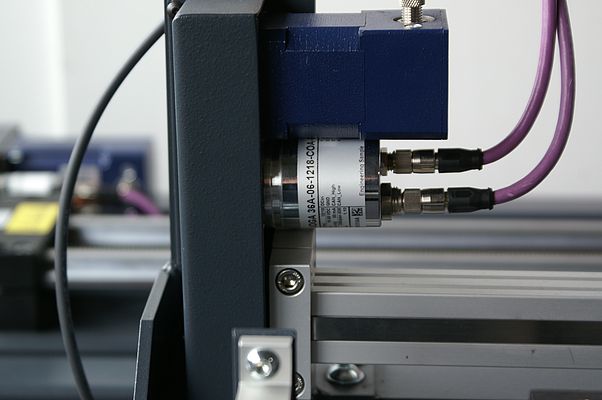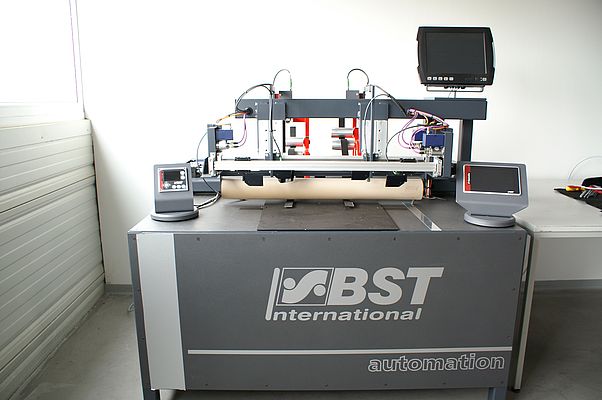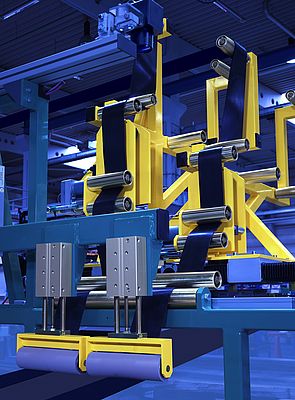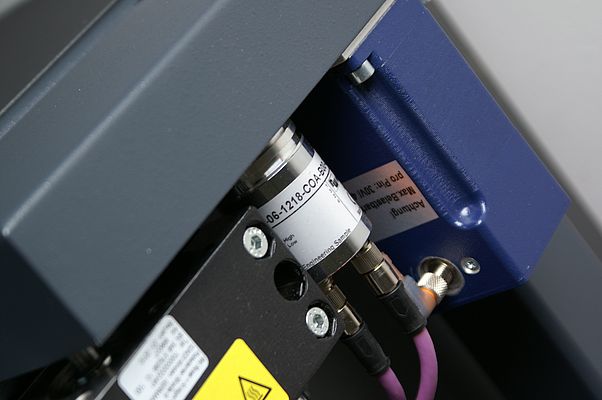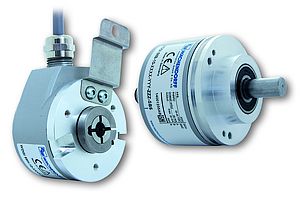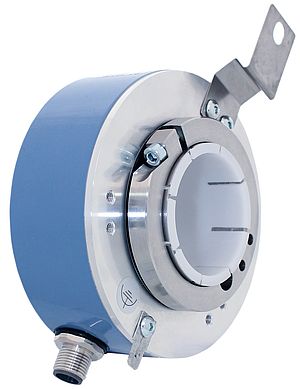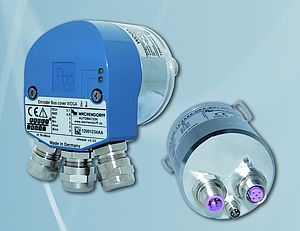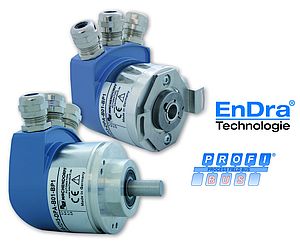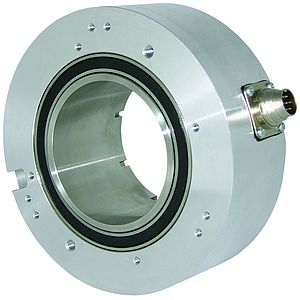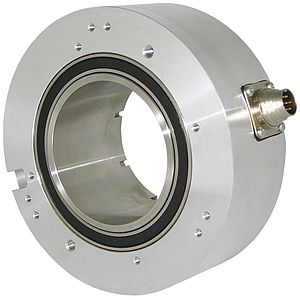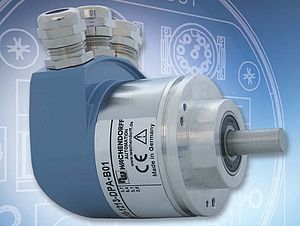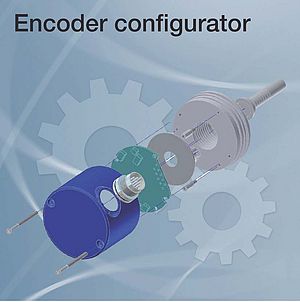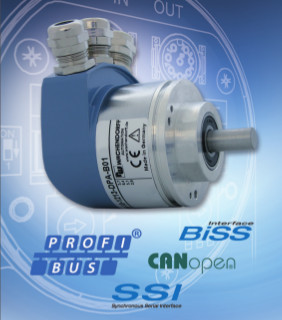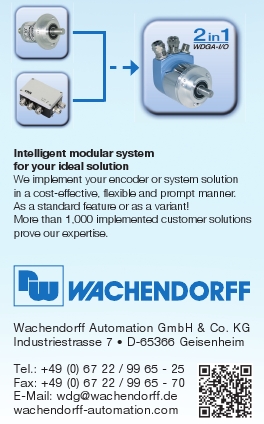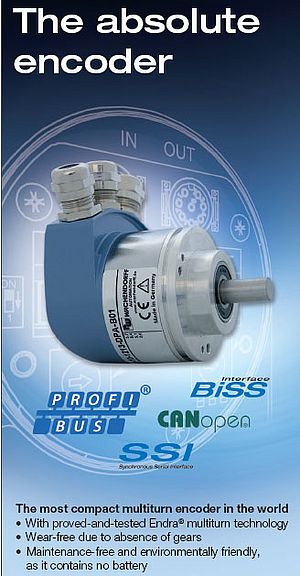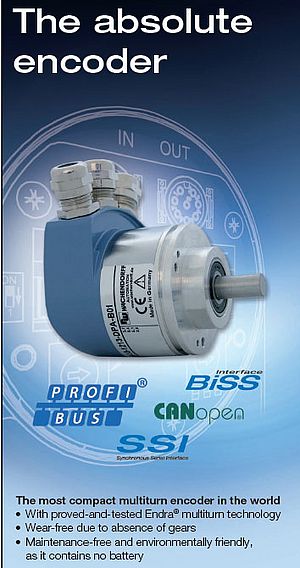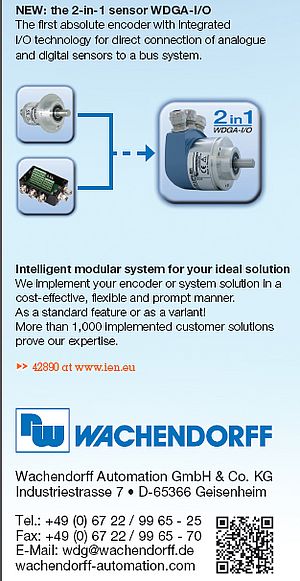BST International GmbH specialises in system solutions for the web-processing industry and is at work anywhere where the production of long webs has to be rolled off, rolled up and laid precisely on top of one another in several layers at the highest processing speed. Absolute value encoders with CANopen interfaces from Wachendorff are used to ensure precise alignment. Using the patented EnDra multiturn technology, you can identify and save your position even in the event of a power cut - with no batteries and no maintenance.
Whether it be packaging film, printed material or car tyres, many products are initially manufactured by the metre and then reformed appropriately at a later point. Beforehand, different web widths often have to be rolled off, processed, in some cases layered on top of each other and then rolled up again. A simple beverage carton is made up of several completely different material layers, for example, which have to first be combined with one another.
Precision required
The market demands high-quality products to be produced quickly and efficiently. Minimal deviations of the web position from the target position result in wastage that no company can afford.
BST from Bielefeld has been supplying state-of-the-art products for these kinds of applications for more than 30 years. They provide products for web production control web video monitoring, print management, print error recognition, register guidance, colour measurement and automation to manufacturers from many different branches. Today more than 170 staff are working on solutions of this nature at their main facility in Bielefeld. Worldwide, BST employs around 350 staff.
Thanks to innovations, such as the recently patented solution for future tyre production, BST has been able to retain its market leadership. This solution monitors and ensures quality and automates during the various manufacturing processes, not afterwards. Errors that occur are compensated for using precise calibration procedures, high-quality digital sensors and correction algorithms. It uses a completely new generation of encoders, for example.
Time is money
The underlying principle of web production controlling systems is always the same: sensors located singly or in pairs at the edges of the various material webs precisely measure the width and position of the webs. These measurements are processing in the machine's regulator and a pivoting frame acts in a fraction of a second to ensure precise pivoting motions that centre the material web and that it arrives at the desired point in the next production process.
Time is a critical factor, as BST designer Lothar Weigel explains: "Today it is quite usual to change material rolls during production on-the fly. There is no time for time-consuming reference adjustments to align each sensor." BST uses absolute value encoders as a matter of course, as they register every movement and therefore every sensor positional change, and pass this data on to the regulator immediately. Then the CANopen protocol comes into play.
Encoder with no battery and no maintenance?
Generally, encoders of this type have backup batteries so that they can identify their positions at any time even if the main power supply fails. "It may be the case that the machine is switched off for a short period, and that the sensors are moved by hand. If the regulator were to lose the positional data, we would have to re-align everything first," explains Lothar Weigel. "These adjustments would cause unnecessary delays to the machine's operation. The only way to be safe is to use backed up encoders."
Previously, these encoders had to be regularly serviced as the battery would run out at some point. "Our systems use six or more encoders, and are in use globally for 10 to 20 years. The servicing cost for replacing the batteries alone would be highly uneconomical," says Weigel. For that reason, BST set about finding a battery-less solution, and in doing so came across a Wachendorff innovation.
New multi-turn technology for absolute value encoders
The Rhine valley-based manufacturer uses patented EnDra technology in its newly developed absolute value encoders. Now no mechanical gearing is required to record the turn direction and revolutions any more. Instead, these parameters are determined using an energy wire. This Wiegand wire is comprised of a hard magnetic sheath and a soft magnetic core. The absolute position per revolution (single turn) is measured using four Hall sensors and a magnet on the rotating shaft. If the magnetic field passes across the Wiegand wire because of the shaft turning, the soft magnetic core will follow the field, which the hard magnetic sheath prevents. An ever-greater field differential exists within the wire, similar to the tensing of a bow. As soon as the external field reaches the sheath's field strength, the sheath is demagnetised and the built-up core tension change round swiftly. This speed-independent impulse is generated twice per revolution and transformed into an electrical impulse via a coil. This generates sufficient energy to operate a low-power capacitor and also to provide information about the number of revolutions made. If external voltage is applied again, a micro-controller calculates the correct value from the position and the number of revolutions and sends the value to the regulator.
This means that the encoder operates wholly independently and requires no backup battery. The omission of mechanical gearing also means that no maintenance is necessary.
"Made in Germany" quality
But this was not the only thing that impressed BST - the many smaller components generated by this new technology are also beneficial for customers: "We were able to integrate the compact WDGA Wachendorff encoder with CANopen interface into the new BST system," says Mr. Weigel.
Another advantage of the Wachendorff solution is that all encoders are designed and produces at the company's headquarters in Geisenheim, Germany. This not only ensures the highest levels of quality, but also means that components can be easily customised to customers' requirements. For example, BST required two CANopen outputs on the back, enabling the connection of a special cable and plug that BST uses for its equipment. The pin arrangement was also changed in accordance with BST's requirements.


